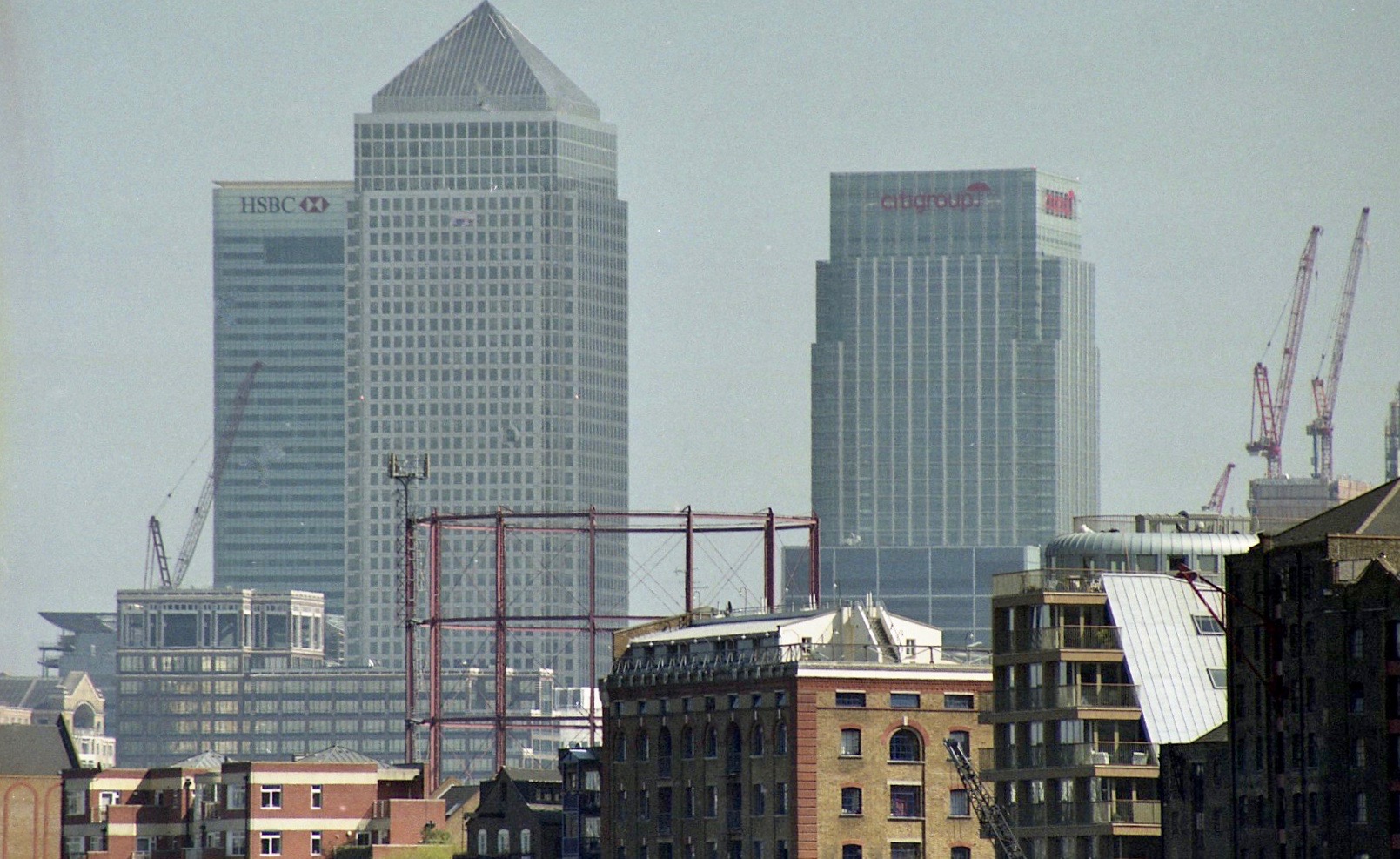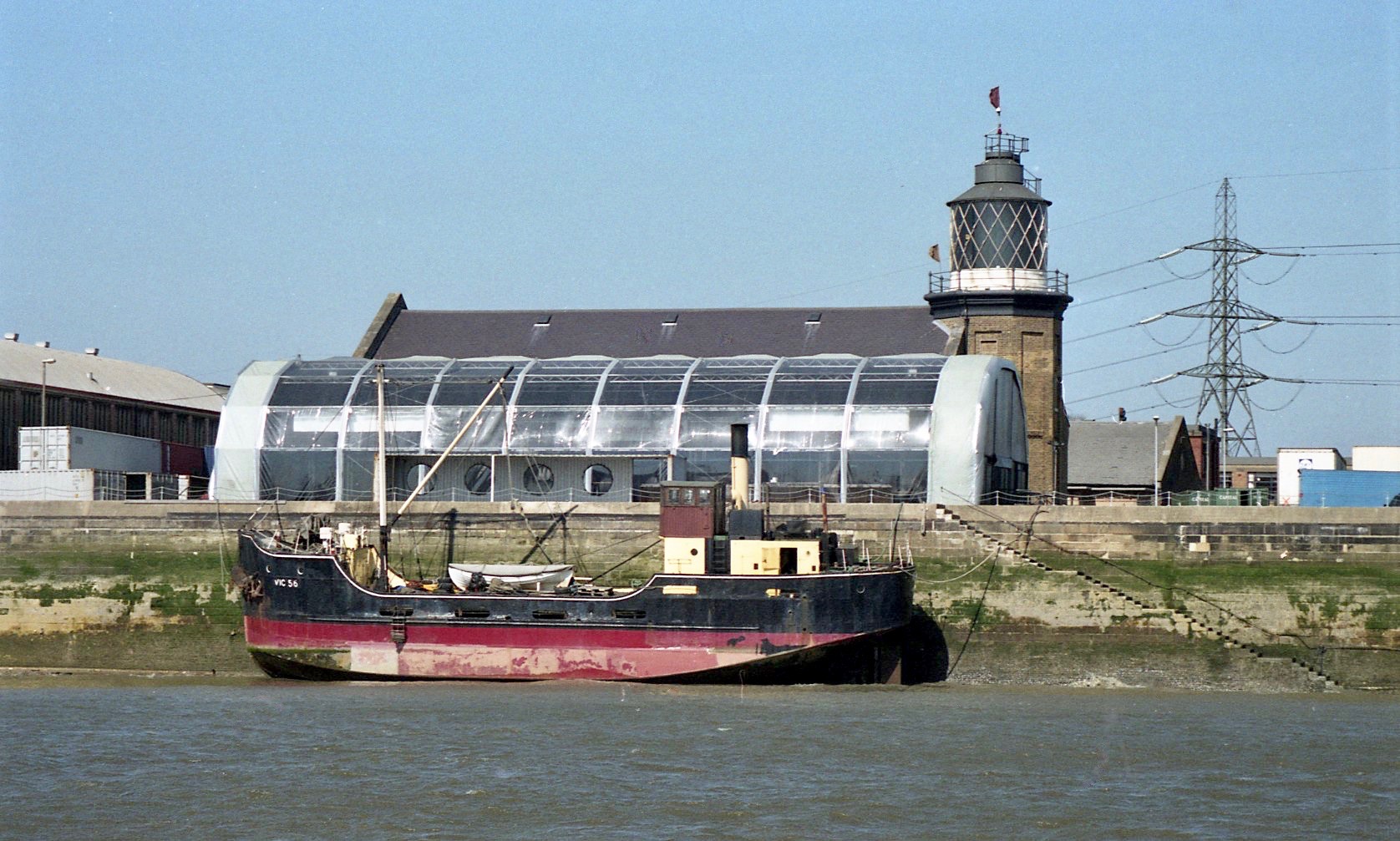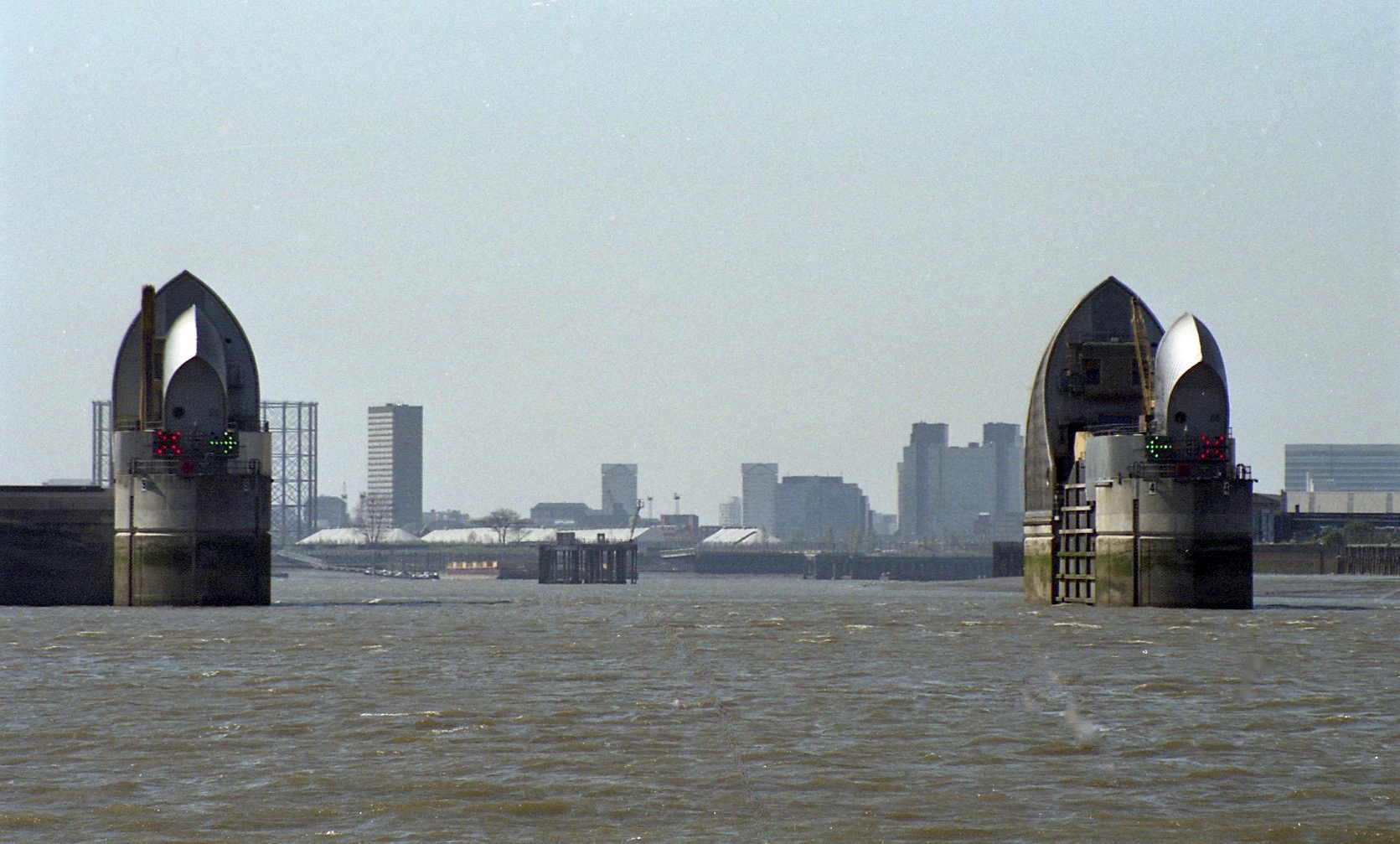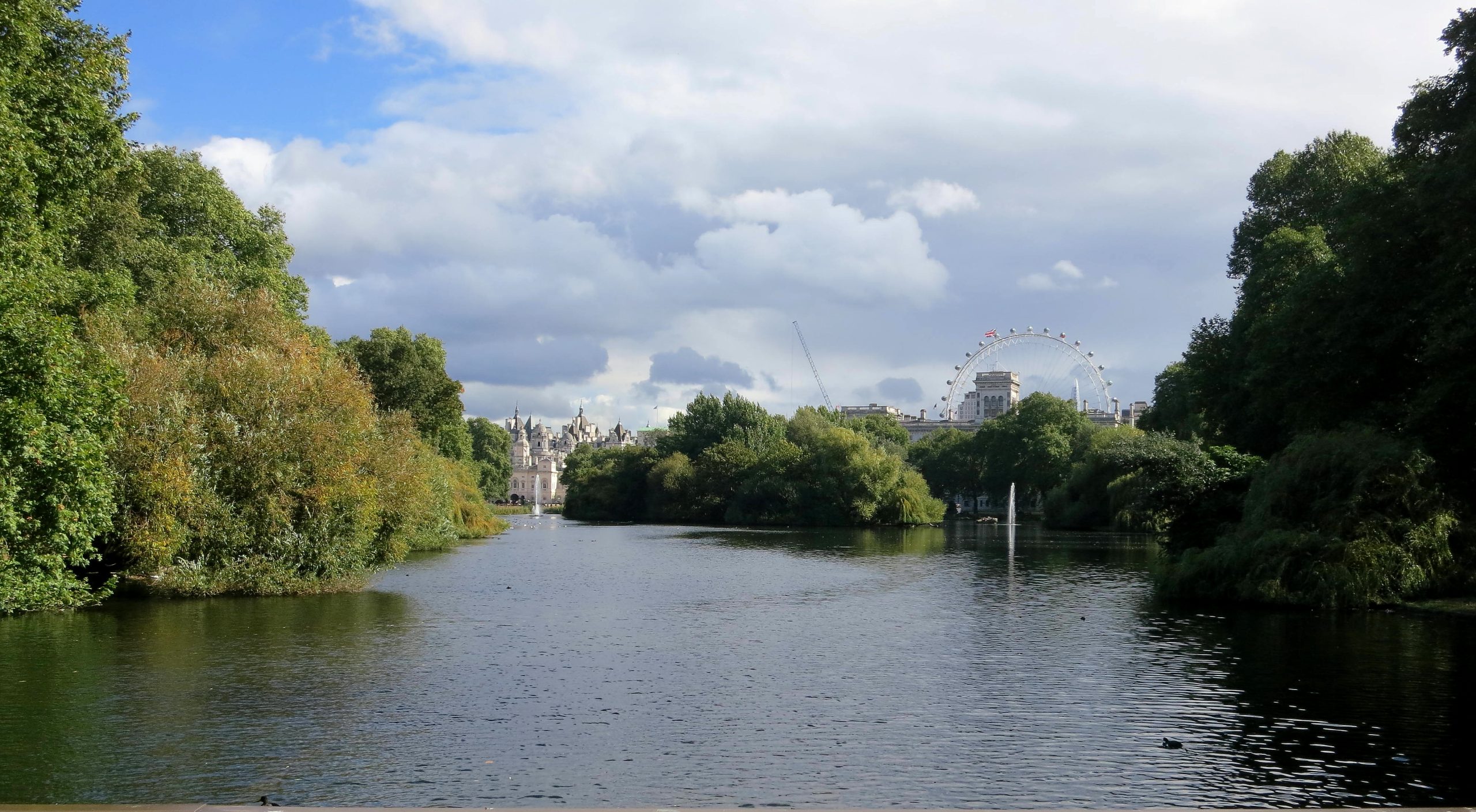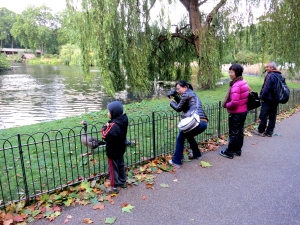Runners in the London Marathon must run down The Mall, around the corner facing Buckingham Palace, and along Birdcage Walk to the finish, just out of sight, on Westminster Bridge.
Crossing St James’s Park’s Blue Bridge into Birdcage Walk in September 2012, I remembered my nephew, Peter Darby-Knight, bravely struggling to walk to the finish, having injured his knee, many years after my own London runs. I had also watched my granddaughter Emily, on two occasions, representing Croydon in the mini-marathon which takes place on the morning of the major event.

A flock of feral pigeons being fed by tourists reminded me of the mass start to the marathon in Greenwich. It takes ten minutes walking to reach the line, and quite a bit longer to find room to get into your stride. On one occasion I was tripped by a man who tried to pass me in this melee. I ran the race with blood trickling from my grazed knee. He also fell. I didn’t help him up.
In the first London race in 1981, Michael and I had watched the two leading men finish hand-in-hand as they crossed the line. Then, the taking part was all. Like the Olympics, that spirit has evaporated. Winning is all.
My son, who the following year would be eighteen, and therefore eligible to run, suggested we do it together. Taking up the idea in earnest, I trained for it. Thinking that, as a rugby-playing fast bowler, I was fit enough, my first session was a five mile run from Croyon College to our home in Furzedown. When I’d finished I could barely walk. I tottered stiffly down to the box at the bottom of Gracedale Road to post a letter. As I turned the corner on my return, who should be striding down the road but John Bussell. John was a neighbour who had said I was completely mad to contemplate the venture. Quick as a flash, I straightened up, denied my pain, and lengthened my step, to greet him.
Michael had more sense, so I ran the race alone. Despite the strenuous competition at the elite level, there are still many thousands of people for whom just taking part is a magnificent experience. I was fortunate enough to participate three times. Then, the Canary Wharf business complex was a heap of rubble. We wondered what was going to be built. The elation of running this race with the streets all lined with row upon row of cheering spectators can only be imagined by non-participants. Jazz bands are playing, and the world is watching on television. If you are thinking of trying it, do not accept one of the many pints of beer which will be proffered outside the pubs alongside. Rather, enjoy the hoses which may be played on you in hot weather.
Coming along The Embankment you will have your first sight of Big Ben. Your heart may sink when you realise you still have four more miles to go. Do not be tempted, as many are, to walk along the underpass where you cannot be seen. If you do, you are unlikely to start running again.
In 1982, Matthew and Becky ran along the footpath beside me towards the finish. That would not be possible now.
On that day in September 30 years later, entering the park opposite Buckingham Palace, a jogger, attempting to leap the low railings which form a border, tripped and went sprawling. Fortunately on the grass. Some years ago, en route to Victoria where I was to board a train to visit Wolf and Luci in Dulwich, I did something similar. Intending to run there from Harrow Road, in the darkness, off Edgware Road, I tripped on a chain closing off a church car park. I had thought I was still on the footpath. Back-pack in harness, my feet still attached to the chain, I came a right cropper. My hands firmly on the tarmac, I was unable to prevent myself from pivoting, head first onto the unyielding surface. The priest took me in, administered first aid, and called an ambulance; and Wolf and Luci visited me instead. In hospital, where I was being stitched up. I bear the scar to this day. Our meal was a little late that night.
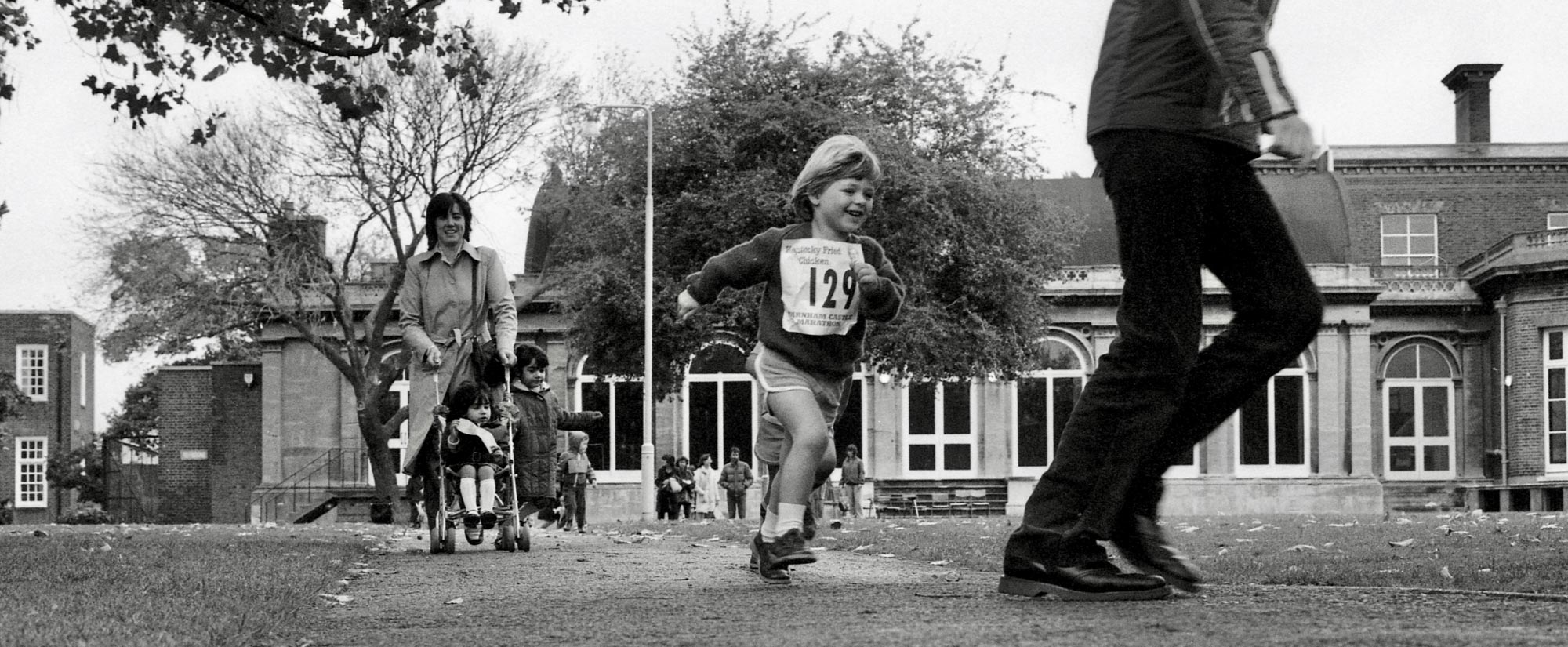
Towards the end of 1983, Sam participated in a mini marathon organised by his nursery school in South West London’s Furzedown.
Even when supported by Becky and Jessica, Louisa didn’t think much of the idea of joining in.

